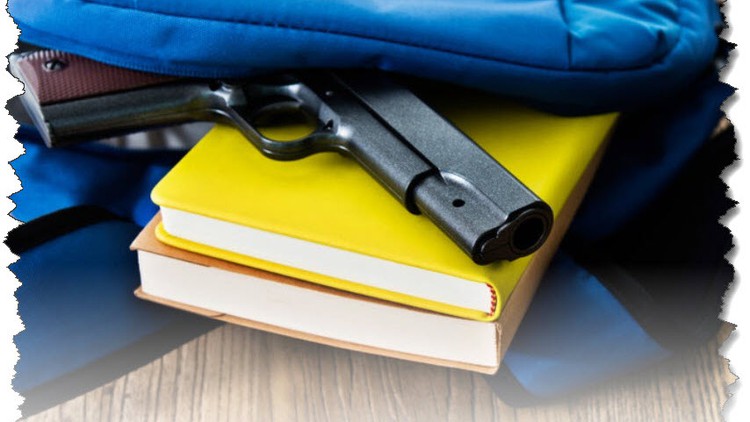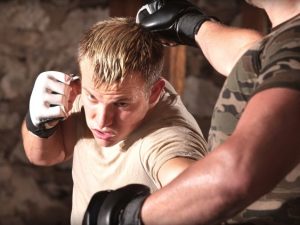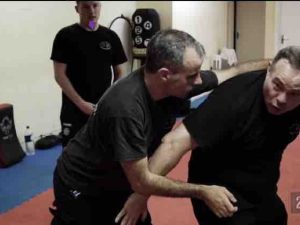How to Recognize a Concealed Handgun
- Description
- Curriculum
- FAQ
- Reviews

This course is based on the instructor’s more than four decades as a security professional. Furthermore, resources from the U.S. Secret Service, the U.S. Diplomatic Security Service, the Royal Canadian Mounted Police, and several private organizations have contributed to this project.
Although initially conceived for private security officers, the realities of today suggest a much larger audience. Unfortunately, audiences now include:
— School Staff
— Healthcare
— Social Workers
— Retail
— Banks/Credit Unions
….and many more…
Gun violence is a major issue in today’s society. This course is neutral and non-political in nature. Instead, it provides “nuts and bolts” insight for those responsible for maintaining a safe environment.
How to Recognize a Concealed Handgun prepares you to:
-
Understand the highly political and emotional nature of gun possession
-
Appreciate the importance of understanding local laws and regulations
-
Analyze your organization’s “no weapons” policy.
The course covers both legitimate carriers and illegitimate carriers. Most attention is spent on illegitimate carriers– people with probable criminal intent. This includes, but is not limited to
-
Physical traits common to the presence of a concealed handgun.
-
Behavioral traits commonly observed with people carrying a concealed handgun.
-
The importance of determining a subject’s “dominant side.”
-
Forming your tactical script to gain compliance with your weapons-free policy.
-
Using body language and proxemics to enhance personal safety
-
Common criminal carry locations
-
Providing options to the carrier– including your trespass authority.
-
1Welcome to the Course
In this lecture, instructor Cole Morris explains the non-political nature of this course.
-
2Housekeeping
Instructor Cole Morris explains why this course is general in nature. This includes suggesting the student become familiar with their local laws and regulations regarding both concealed and "open" carry. This awareness will greatly add to the learning experience.
Cole also warns, that just because something is legal, doesn't mean you should do it. In other words, what does your client or employer expect from you when dealing with a potential "no weapons" violation?
Finally, this lecture explains how the potential audiences for this course has grown since its inception. In addition to private security officers, this topic will be of value to educators, retailers, and healthcare workers. The list includes bank tellers and human resources specialists, houses of worship...and beyond.
-
3Two Types of Concealed Carriers
Upon completion of this lecture, you will understand the two types of people that typically carry concealed handguns. This includes managing the unique challenges each group presents. Further, you are reminded to avoid debates and arguments over gun rights, Constitutional amendments and related highly incendiary politics.
-
4Gun Fighting 101
Instructor Cole Morris provides insight into:
The importance of determining a person's dominant side
The role of holsters in concealed carry
-
5Providing Options
No one likes to hear the word "no." This is also true if you are responsible for prohibiting weapons in your workplace. After this lecture, you will understand the importance of linking "no" to options that can help resolve the issue. For example:
Sir, I'm afraid this is a weapons free establishment. Can I ask you to remove the handgun from our premises? Perhaps you can secure the weapon in your car as you shop...?
-
6Keeping Things Cool...24X7
This lecture emphasizes the importance of self-awareness. Almost everyone has feelings about firearms and these are formed by a number of personal experiences. What's your background and attitude regarding guns? Will this influence you ability to handle a gun issue in the workplace?
Self-reflection and personal awareness are suggested.
Don't miss the video in the Resources Section. It is a link to the USCCA, the largest organization catering to the needs of the concealed carry community. The video will give you additional perspective. Watch it.
-
7Learning Check #1
This quiz checks your understanding of the content provided in Section 1 and Section 2 of the course.
-
8Behavioral Indicators
It's time to focus on behaviors as they apply to concealed handguns. This lecture sets table for future videos regarding:
Types of firearms
Categories of behavioral indicators:
Those prompted by the position and mass of the concealed weapon
Those resulting from stress and fear of being discovered/challenged
-
9Six Indicators
This lecture provides a quick overview of the six behavioral indicators of gun carrying:
Security Feel
Shortened Stride
Shortened Arm Swing
Adjusting Pants/Belt
Repositioning Gun
Blading
-
10The Security Feel
The Security Feel is a behavioral indicator people can lean to watch for. Is is commonly exhibited by people when concealing a handgun. This lecture describes the security feel and why it occurs.
-
11The Shortened Stride
-
12The Shortened Arm Swing
Similar to the shortened stride, the shortened arm swing is another observable indicator of a potentially concealed handgun. Both indicators originate with the carrier being self-conscious about the concealed weapon. In short, the shortened arm swing is used to help secure the weapon-- and to keep it concealed.
-
13The Belt and Waistline
This lecture continues with the motivational theme as to what drives the gun carrier's behavior. In this case, a gun concealed at the waistline and belt, often prompt observable behaviors. This can include:
- Readjusting clothing
- Tightening ("cinching") the belt
This lecture further identifies observational opportunities such as:
- Exiting a car
- Transitioning from a seat to standing.
-
14Repositioning the Handgun
Repositioning of the handgun is usually the result of physical movement. It is sort of like a "security feel" on steroids. Important Point: In some instances, repositioning may indicate a "pre-attack indicator."
-
15Blading
"Blading" is the physical action of turning one's body 90-degrees when engaging another person. Blading is conducted by legal and illegal gun carriers. It is also widely practiced by law enforcement and armed private security officers.
-
16Learning Check #2
These questions will check your understanding of the material in Section Three. Specifically, the behaviors than may indicated the presence of a concealed handgun.





